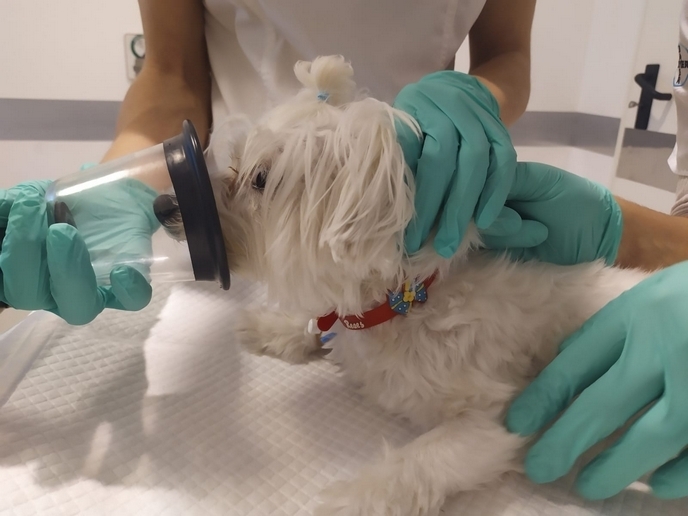Breath test for canine leishmaniasis
Leishmaniasis is a parasitic disease that threatens both animals and humans across Europe, Africa, Asia and South America. Transmitted by the bite of infected sandflies, the disease manifests as cutaneous leishmaniasis, which causes severe skin ulcerations, or as visceral leishmaniasis, a life-threatening form that affects vital organs such as the spleen, liver and bone marrow. Dogs are the main reservoir of the parasite and diagnosing canine infections quickly and accurately is essential for protecting both animal and human health. However, conventional diagnostic methods are often invasive, costly, or produce ambiguous results.
Identification of volatile biomarkers
With the support of the Marie Skłodowska-Curie Actions programme, the CANLEISH(opens in new window) project set out to explore novel, non-invasive approaches to improve the detection of canine leishmaniasis. By combining volatile organic compound (VOC) analysis, electronic nose prototype, and AI-driven data analysis, the consortium has also developed a platform that could transform veterinary diagnostics. “The key objective was to search and identify chemical fingerprints of canine leishmaniasis,” explains project coordinator Violeta Elena Simion. Using gas chromatography-mass spectrometry(opens in new window), researchers analysed the volatile compounds released in the breath and hair of dogs infected with leishmaniasis. The results revealed one tentative breath biomarker and five possible hair biomarkers for cutaneous leishmaniasis, as well as nine breath and four hair biomarkers for the visceral form. Interestingly, the compound glyceryl monooleate appeared in both forms, making it a potential universal marker. This work, published in Analytical and Bioanalytical Chemistry(opens in new window) suggests that VOC analysis is a promising route for non-invasive diagnosis and should contribute to clinical decision-making.
Portable electronic nose prototype
To translate these discoveries into a practical diagnostic tool, the consortium developed a portable electronic nose(opens in new window). The device integrates eight gas sensors, supported by humidity, temperature and flow sensors, to detect the VOC signatures of infected animals. Researchers utilised the prototype to test breath samples from dogs and the data were processed through the ODORA custom-built software platform. While only five dogs were included in the validation study, the system successfully demonstrated proof-of-concept. “Our prototype shows great promise, but larger validation studies will be necessary to fully evaluate its diagnostic accuracy,” emphasises Simion.
Harnessing AI for decision support
CANLEISH built an AI-based decision support system capable of interpreting sensor outputs and distinguishing between healthy and infected dogs. Machine learning models were trained on datasets from dogs in Tunisia, using hair and breath VOC profiles. The models reliably classified infected and control animals, but further research is needed to distinguish between infection types or to account for geographical differences in VOCs.
Sustainable impact
Beyond technical advances, CANLEISH placed strong emphasis on building sustainable research networks across Europe, Africa, Asia and Latin America. Multidisciplinary teams of experts collaborated through international secondments and trained the next generation of researchers in cutting-edge interdisciplinary methods. According to Simion: “The greatest benefit of CANLEISH was not only the technology developed, but also the creation of sustainable research networks and training of early-career researchers.” Overall, the project laid the foundation for future veterinary diagnostic tools that are non-invasive, portable and affordable. By integrating e-nose devices into mobile clinics, diagnosis could reach remote areas where access to laboratories is limited. Veterinary staff could be trained to use these tools, making early detection of canine leishmaniasis more widespread.



